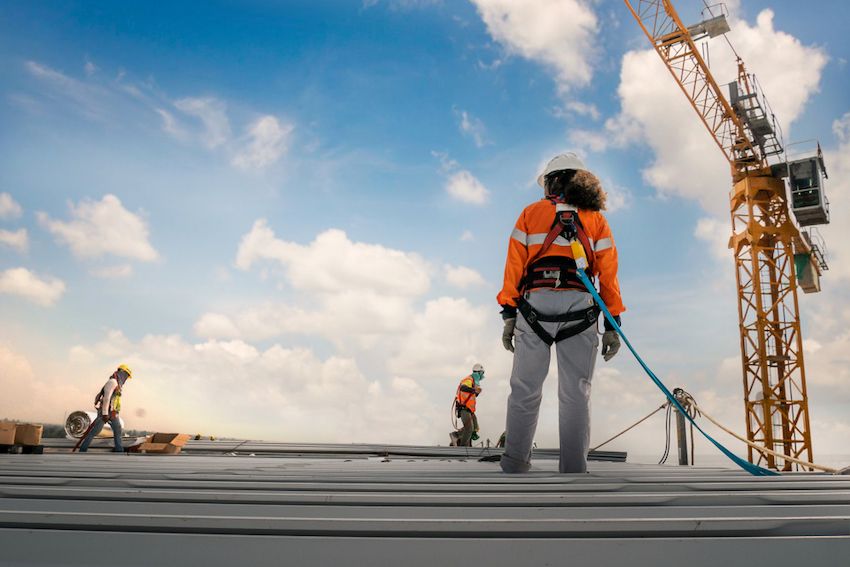According to the Bureau of Labor Statistics (BLS), the number of American workers 55 and older more than doubled from 1992 to 2017. By 2025, older workers are expected to make up a quarter of the entire workforce, according to Harvard Business Review.
There are a number of advantages to employing older workers. For example, they’re often highly skilled, highly experienced, and they increase the cognitive diversity of your teams, which is shown to increase productivity and improve output.
Unfortunately, statistics show older workers are more susceptible to job accidents than their younger peers. From 1992 to 2017, an alarming 26 percent—a total of 38,200—of all fatal occupational injuries were sustained by older workers, according to the BLS. The fatal safety incident rate was most extreme for workers aged 65 and up. Tragically, this group suffered 775 fatal injuries in 2017—the highest number ever recorded by the Census of Fatal Occupational Injuries.
Even more concerning, workers aged 55 and up composed just 17 percent of the labor force during this time period. Also noteworthy, the fatal injury rate for the workforce as a whole tumbled 17 percent during this 25-year span, according to the BLS. However, older workers experienced 56 percent more fatal work injuries in 2017 than in 1992.
These statistics are sobering, but they shouldn’t put employers off from hiring older workers. Rather, they show a strong need for worker training in the 55-plus age group. Worker training specially tailored to a mature demographic can literally mean the difference between life and death, making it a measure you can’t avoid.
Here, we share five tips you can follow to improve your training programs for older workers.
Webinar: How to Create a Safety-First Culture
5 worker training tips for older professionals
1. Explain the purpose of training
Many older workers aren’t interested in job training because they’re close to retirement. They’re no longer trying to climb the career ladder, so they may feel like training is a waste of their time.
Therefore, it’s important to educate them on the importance of training beforehand. When they realize they’ll be learning tips to stay safe on the job—instead of acquiring new skills they don’t think they need—they’ll be much more receptive to participating.
2. Find out what they already know
It’s not fair to group all workers aged 55 and up into the same category. Different people have different skills and experience, so don’t assume all of your workers need the same level of training.
Meet with employees one-on-one to find out where they stand. This will help you gauge both the type of training the group as a whole needs and where people are at individually.
Workers will be much more open to job training they feel like they actually need, instead of something that seems redundant. This will allow them to be more engaged in the process, so they get more from it.
Check out: 7 Steps For Successful Safety Stand Downs
3. Make them feel valued
The last thing you want is for any employee to incur serious injuries on the job. Make worker training resonate with older employees by adding an emotional element when explaining your reasoning for these sessions.
Instead of focusing on something robotic—like the production delays job accidents can cause—let workers know you’re fully invested in keeping them safe on your watch. Emphasize how much you value them as people and care about their safety. When workers feel you truly have their best interests at heart, they’ll want to participate and be fully present.
Read: 10 Keystones of a Successful Worker Safety Program
4. Offer a reward
Young, ambitious workers tend to enjoy training because they want to advance their careers. However, older workers may feel differently.
Since most aren’t trying to score a promotion, more seasoned workers sometimes need a little extra motivation to get excited about training activities. Offering a reward for participation or incorporating fun challenges—with prizes for winners—into the training itself can serve as an effective incentive.
Those who don’t feel the training is necessary might be more inclined to join in when enticed by a reward. Incentives like gift cards, a free lunch, or an extra paid day off can sweeten the deal.
5. Turn the tables
It’s important to remember that your older workers have decades of experience in the field. Try to avoid, or at least offset, any feelings of resentment over having to participate in additional training by tapping into their wealth of knowledge. There might be opportunities for them to help lead safety training, but if not, ask them to lead other types of learning sessions.
Everyone wins in this situation because younger employees get to learn from their more seasoned peers. Instead of thinking they’re being singled out for worker training, older staffers will feel like they’re part of a teamwide growth initiative.
This is important because you don’t want older workers to think you’re talking down to them or otherwise insulting them. Many of these people have probably been with your company for many years—or even decades—so they deserve to feel respected.
Statistics show ongoing and refresher worker training is essential for older employees. It’s important to implement new training protocols now, so you can avoid preventable accidents later. Using the tips above will help you better relate to your more mature workers, so they feel respected and understand the value of training sessions.
Up next: 4 Common Predictive Leading Indicators

